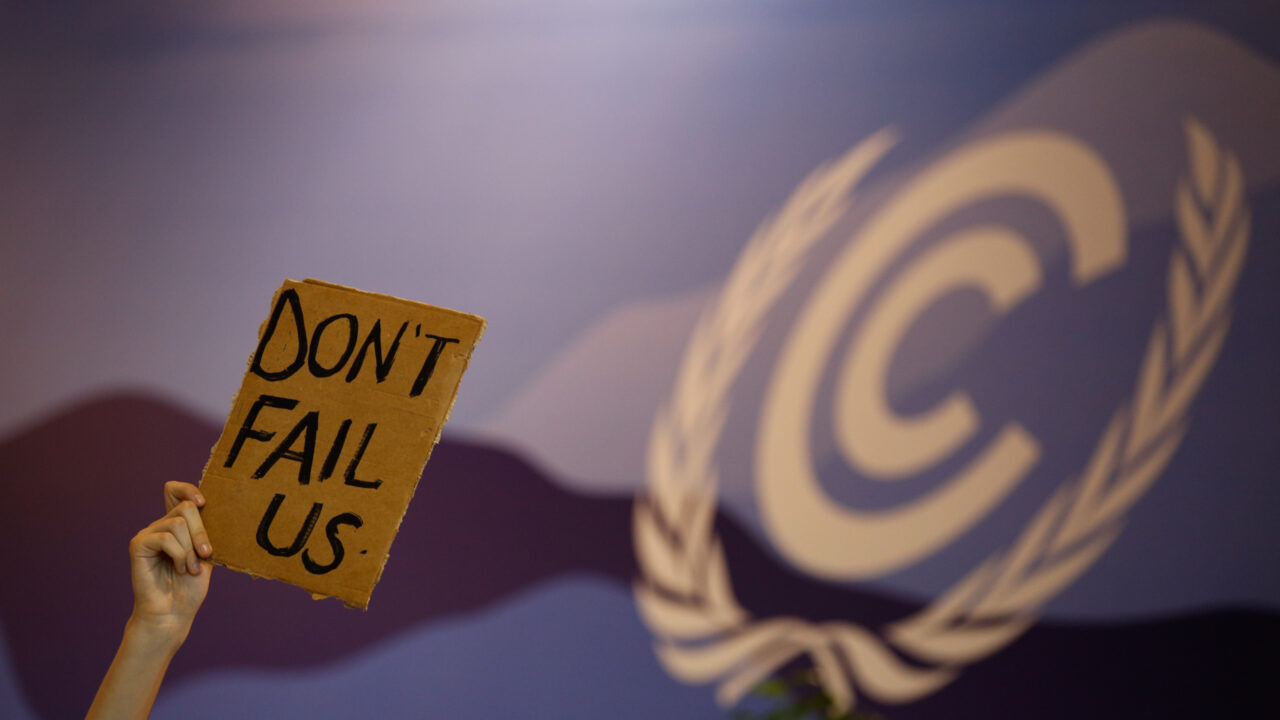Global solidarity or collective suicide: Why we cannot abandon the Paris Agreement’s global warming target
The international climate conferences in 2022 revealed the divisions between countries on climate goals – and the need for global solidarity in climate negotiations
The climate catastrophe and the ecological crisis, reflected in the loss of biodiversity increasingly referred to as the ‘sixth mass extinction’, require joint action by all states and societies. The major international climate conferences in 2022 resulted in some concrete action, but they also raised questions about how realistic the targets laid out in the 2015 Paris Agreement are.
The United Nations Biodiversity Conference in December produced a landmark agreement. After many years of negotiations, nearly 200 countries adopted a programme which, if implemented, will provide an opportunity to halt the biodiversity crisis and rebalance human-environmental relations by 2050. However, the United States – the world’s largest economy – has still not ratified the UN Convention on Biological Diversity and is therefore not party to the agreement.
The results of the UN Climate Change Conference (COP27) were also disappointing. The conference succeeded in defending the minimum – maintaining the Paris Agreement’s target to limit global temperature rise to 1.5 degrees Celsius compared to pre-industrial levels. However, it also showed how tenuous agreement around the climate goals is, and how easy they are to challenge when the discussion and negotiations focus on what divides rather than what unites.
Since the early UN climate conferences, the countries of the global south have insisted that the countries of the rich global north are responsible for the climate crisis and that they should therefore be responsible for combatting atmospheric warming and its consequences. Indeed, carbon emissions are closely correlated with wealth. Analysis shows that 10 per cent of the world’s richest people are responsible for nearly half of global emissions; the vast majority of them live in countries of the global north.
The tension between the global south and the global north came out in full force on the first day of COP27. The prime minister of Barbados, Mia Mottley, expressed its essence perfectly, saying: “We were the ones whose blood, sweat, and tears financed the industrial revolution. Are we now to face double jeopardy by having to pay the cost as a result of those greenhouse gases from the industrial revolution? That is fundamentally unfair.” As examples of the suffering that countries in the global south are enduring, Mottley evoked the catastrophic floods in Pakistan and the record drought in Africa, which resulted in a famine affecting more than 100 million people. Despite resistance from countries of the global north, a European Union initiative helped to establish the “loss and damage” fund and to increase aid to the countries that are most vulnerable to and affected by climate change. This was the most important decision of the conference. The fund reinforces the goal to combat the climate crisis in solidarity and to fairly share the responsibilities and commitments to do so.
COP27 did little, however, to advance the goal of limiting global warming to 1.5 degrees. Although this objective remains part of the conference’s outcome document, the document’s findings do not lead to its achievement. Ambition to advance this goal was lacking at the conference. More than 600 fossil fuel lobbyists, affiliated with fossil fuel companies or delegations acting on behalf of the fossil fuel industry, registered to attend COP27. Their interests won out. The outcome document maintained the conservative provision adopted at COP26 on the use of coal, with no declaration of an end to its use, omitted oil altogether, and reduced commitments to developing low-carbon energy systems.
Given how unrealistic the 1.5 degrees goal seems, it is tempting to suggest, as the Economist did, choosing a new target, for example of two degrees – another value present in the Paris Agreement. Proponents of a new target argue that it would be an expression of realism allowing for a feasible way forward. But doing so would be a tipping point in political and practical terms, after which climate change and climate negotiations could spiral out of control.
Abandoning the 1.5 degrees target would have disastrous environmental consequences. Many of the processes set in motion by climate change can no longer be stopped. Every additional degree in atmospheric temperature accelerates these processes and increases the irreparable environmental changes. The destruction of the cryosphere (the earth’s snow and ice regions), resulting rise in sea levels, and thawing of the permafrost is a case in point. Permafrost is ground that remains frozen for at least two years; when it thaws, it releases the emissions that are trapped within it. The thawing of the permafrost is already adding carbon dioxide and methane emissions equal to those produced by Japan to the atmosphere at 1.1 degrees of warming. At 1.6-1.8 degrees of global warming (classified as a situation of low emissions), emissions from permafrost thaw will add as much carbon dioxide and methane as India currently does from human emissions; a temperature rise of two degrees would result in emissions from permafrost thaw reaching the level of those from human emissions from the EU today. As the authors of the “State of the Cryosphere” report write, the melting point of ice is non-negotiable.
The experience of negotiating with the countries of the global north at COP27, as well as the experience of the pandemic, shows that the global south cannot count on countries of the global north for adequate support.
The political consequences of abandoning the 1.5 degrees target are no less dangerous. The emphasis of the climate negotiations would inevitably shift from mitigation to adaptation. Fossil fuel lobbyists would undoubtedly argue that since the carbon budget – the amount of carbon that can still be released into the atmosphere without derailing the possibility of meeting the target – has expanded, there is no need to move away from digging up coal, oil, and gas so quickly. Given the decreased urgency, the focus would move to developing technologies that will bring cheaper solutions to rising temperatures, such as geo-engineering. Unfortunately, there is no shortcut. These solutions will not save the most vulnerable to climate catastrophe – the people of the poorest countries in the global south. And every additional degree has consequences for them to which adaptation will be either impossible or too expensive.
What’s more, the experience of negotiating with the countries of the global north at COP27, as well as the experience of the pandemic, shows that the global south cannot count on countries of the global north for adequate support. Countries like China, which were recently very poor but have increased their wealth considerably, are also reluctant to help.
The climate process has reached a tipping point. Speaking at COP27, UN Secretary-General Antonio Guterres laid out a simple choice: either we choose global solidarity or collective suicide. The establishment of the loss and damage fund is a long-awaited act of global solidarity. This same spirit of solidarity should underline other negotiations at the climate conferences. The abandonment of the 1.5 degrees target, and the ambition to achieve it, may be an expression of realism, but of suicidal realism, unfortunately.
Edwin Bendyk is an ECFR Council Member and the President of the Board at the Stefan Batory Foundation.
The European Council on Foreign Relations does not take collective positions. ECFR publications only represent the views of their individual authors.



